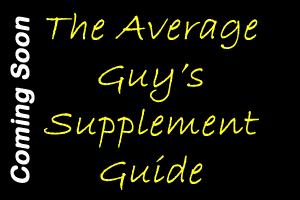I often come across articles on other web sites and sometimes in the newspaper advising people on what to look for in a personal trainer or a fitness facility. And I often ask myself, "Just what makes a good Personal Trainer".
Well, I think it could mean a number of things and if you asked a number of people you would get a few common threads expressed. You would think knowledge would be a top priority in most peoples' minds. I agree that knowledge is important and a thorough knowledge of anatomy/physiology, exercise technique, teaching methods all are crucial in the development of a good personal trainer.
But, in my opinion I think the technical aspects of personal training – the anatomy, proper squat and deadlift form, even methods of teaching can all be learned given a desire to do so and time. The most critical part to me is a caring attitude. I am often reminded of a phrase I once read. I wish I could remember where I read it or who wrote it so I could give them credit. But, the phrase goes like this:
"No one cares how much you know until they know how much you care."
I think no truer words were written and it is something I have based by business on since Day 1. I have always been involved in fitness. I have been active my whole life, from riding and showing horses (jumpers/dressage) as a kid to young adulthood where weight lifting/bodybuilding took over. Do I have a passion for what I do? You bet I do! Do I like to spread the word about fitness? You bet, I will tell anyone who will lend me their ear.
But, for me it is all about caring. I truly care about every single client that allows us the privilege of training them. I always strive to make their one hour spent with us in the gym the highlight of their day, even if they do have to drag the sled around. I care about them, I care about their children, their pets. I love to hear what is going on in their lives and in their childrens' lives. I am always happy to trade critter stories.
When the times comes that a client leaves us, I am truly sad. And it is not about the loss of income, it is because I am going to miss seeing that person and miss sharing an hour. I honestly think I go through a little separation anxiety every time someone leaves. So, thank goodness we do not have a large turnover of clients. It is not that often that a client leaves once they start training with us and for my stress level that is a good thing.
There is often a discussion among facility owners and even other personal trainers about what would you look for as an employer hiring training staff. For me education and certifications matter of course, but none of it means anything if you don't genuinely care about the people you train. It is my hope that my clients know how much I care about their health and well being and how much I care about providing the best in personal training services. And I believe they care about me as well and they show that by continuing to work with me and my staff at our studio and they continue to refer family and friends to us as well.
If you are looking for a personal trainer to work with keep these thoughts in mind. For the genuine trainer, it about the client. It is all about caring and showing an interest. They should have a passion for what they do and you should feel this.
Keep well, train hard.
Till next time,
Narina
